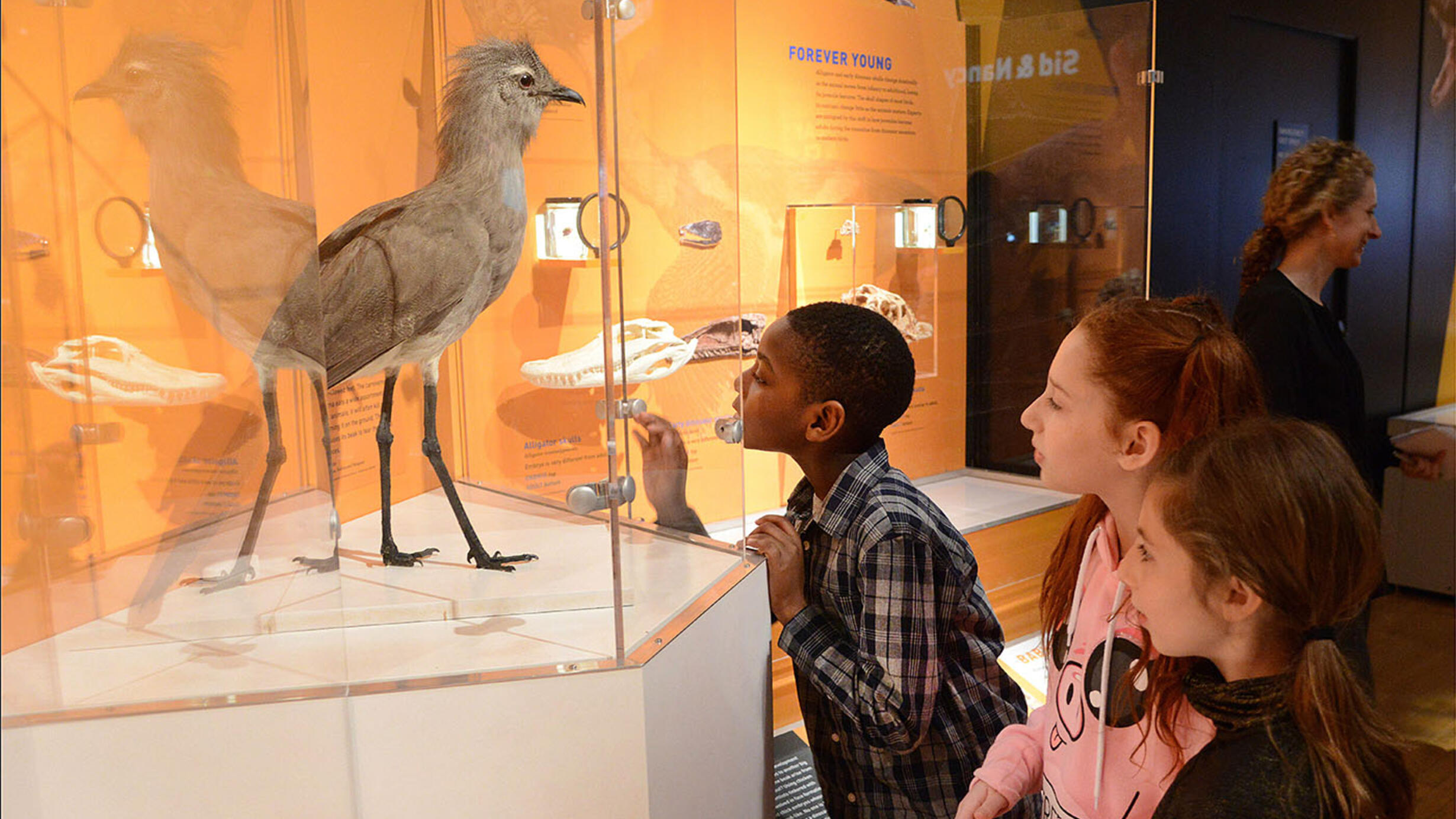From the Age of Dinosaurs to the Age of Birds
Part of the Dinosaurs Among Us exhibition.

The remarkable diversity of birds arose from these in the space of just 15 million years. In an evolutionary heartbeat, all of the bird groups familiar to us today flourished, producing a staggering variety of modern birds—perhaps as many as 18,000 species.
Courtesy of Wikimedia Commons
Hoatzins are the only living representatives of one of the most ancient lineages of birds, with origins about 64 million years ago. Young hoatzin have two claws on the bones that support their flight feathers—that is, on their hands. If a chick falls from the nest, which is a common cause of death among many baby birds, it can claw its way back to safety.
Courtesy of Wikimedia Commons
The shaggy-throated giants of the crow family, common ravens are social, highly intelligent hunters and scavengers. Some ravens—and their relatives like crows and jackdaws—have even been observed using tools and solving complicated problems in the wild.
Courtesy of Wikimedia Commons
The extravagant tail feathers of this violet-tailed sylph reveals that it is a male. Females are short-tailed. Hummingbirds rotate their wings during their flight, in much the same way some insects do, a flight tactic that saves energy.
These extraordinary living dinosaurs provide a vivid link to the ancient past in ecosystems all over the planet, from tropical forests to frozen tundra. Their diversity and success across the planet can mean only one thing—the new Age of Dinosaurs is now.
Lead image: Visitors study a bird in the Dinosaurs Among Us exhibition. © American Museum of Natural History/R.Mickens